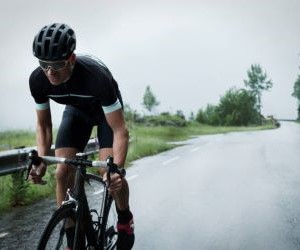Discover the most important cycling safety accessories every rider should have, from helmets to visibility gear, for safer and more confident rides.
HOW DO I MANAGE HYDRATION ON COLD RIDES?
Hydration on cold rides is often overlooked, but maintaining fluid balance is critical for performance and safety. Cold weather reduces thirst perception, making cyclists more prone to dehydration, even in chilly conditions. Strategic fluid intake, warm drink choices, insulated bottles, and monitoring urine color are essential techniques. Combining hydration with electrolyte balance, layered clothing, and pre-ride preparation ensures riders stay energized and maintain optimal body function, avoiding performance drops or hypothermia risks.

Hydration challenges in cold weather
Cold temperatures can deceptively increase dehydration risk. Many cyclists feel less thirsty and may ignore fluid intake, while sweat can still occur under layered clothing. Recognizing how cold affects hydration is the first step toward effective management.
Reduced thirst perception
The body’s natural thirst cues weaken in cold conditions. Cyclists may not feel the need to drink despite losing fluids, leading to subtle but cumulative dehydration.
Set regular drinking intervals regardless of thirst
Use a hydration plan before and during the ride
Track fluid intake with a bottle counter or app
Fluid loss through sweat
Even in cold weather, layers trap heat and cause sweating, leading to hidden dehydration. Riders may underestimate fluid needs if they rely solely on ambient temperature cues.
Wear moisture-wicking base layers to regulate sweat
Monitor clothing dampness to gauge fluid loss
Consider electrolyte-enriched drinks to replace salts
Pre-ride hydration strategies
Starting a ride well-hydrated provides a buffer against fluid loss and improves endurance. Pre-ride hydration ensures that the body begins in optimal condition, even when the cold reduces natural thirst.
Fluid loading before riding
Consume moderate amounts of water or electrolyte drinks in the hours leading up to a ride. Avoid excessive fluids that may cause discomfort in cold weather or frequent stops.
Drink 500–700 ml of water 1–2 hours before riding
Include a small amount of electrolytes if the ride exceeds 60 minutes
Eat hydrating foods like fruit or oatmeal with water
Warm drinks and temperature considerations
Cold temperatures can make consuming cold fluids uncomfortable. Using warm drinks can enhance intake and provide extra energy.
Prepare tea, warm electrolyte drinks, or diluted juice in an insulated bottle
Avoid very hot liquids that risk burns or rapid cooling
Consider caffeine-free options to prevent diuretic effects
During-ride hydration techniques
Maintaining hydration during cold rides requires planning and consistent execution. Practical strategies help cyclists avoid underhydration while dealing with gloves, cold hands, and insulated bottles.
Regular sipping vs. large volumes
Take small, frequent sips rather than drinking large volumes sporadically. This method ensures steady fluid intake without overwhelming the stomach or causing discomfort in cold conditions.
Sip every 10–15 minutes even if not thirsty
Use bottles with easy-to-access spouts to minimize hand exposure
Rotate bottles if using insulated packs to maintain temperature
Electrolyte and carbohydrate balance
Electrolytes prevent cramping and maintain muscle function. Combining hydration with small amounts of carbohydrates helps sustain energy, particularly on longer cold rides.
Use low-sugar electrolyte solutions to avoid digestive issues
Consume gels or chews with water to stabilize energy
Adjust intake based on ride intensity and sweat rate
Bottle and pack insulation
Fluids can freeze quickly in cold weather. Insulated bottles, sleeves, or packs prevent freezing and make sipping easier without long stops.
Use neoprene or thermal sleeves for water bottles
Store bottles close to the body for warmth
Consider using insulated hydration packs with bite valves
YOU MAY ALSO BE INTERESTED






